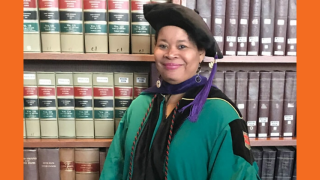Body
Anyone considering the use of an electronic aid for daily living should contact an assistive technology center for evaluation by a qualified occupational therapist. These professionals can help determine specifically which equipment would be most appropriate.
An electronic aid to daily living is a device that allows a person with impaired mobility to:
- Get help in an emergency either from someone inside or outside the home;
- Use a telephone;
- Operate household devices such as television, lights, fans, air conditioners and computers.
Devices can be accessed by direct selection (as in a standard telephone or television remote), switch access (using a single switch activated by any available motion) or voice/speech.
Emergency Call Systems
An Emergency Call system can be used to summon caregiver assistance inside the home, or to call outside the home to a neighbor or 911.
- Baby monitor – low cost way to summon assistance
- Intercom – one or two-way voice communication system with hands-free or pushbutton activation
- Wireless doorbell - powered chime that can be placed in any room and operated remotely
- Adapted beeper - portable buzzer that can be activated by a single switch
- Personal pager – transmitter button is pushed and the receiver unit beeps or vibrates to notify others.
- Lifeline emergency monitoring system - activation of pendant connects user with a 24-hour monitoring service
- Operator assisted dialing service - free for people with disabilities through local phone service providers
- Switch activated speakerphones (see below) - can be programmed to dial 911 or a caregiver
- Smart watches- some have fall alerts. Many models can connect to your smart phone.
Telephone Options
Adaptive telephones are available for people with mobility impairments. These devices may require a doctor’s prescription.
- Speaker phone - push-button access, for hands-free operation and conversations
- Cordless headset phones and cellular phones - wireless phone that can be attached to wheelchair, walker or bedside and may be preset with desired numbers. A headset can be used for people with impaired arm function. On most smartphones, voice commands can be enabled for many functions including making phone calls.
- Smartphone – Many Models have options for voice activation for phone calls and other functions.
Electronic Aids to Daily Living (EADL)
These devices are used to control appliances, televisions, hospital beds and telephones. Many are operated by single or dual switches, or voice controlled, making them useful for people with severe mobility impairments.
- Voice activated speakers –The Google Home, or Amazon Echo can be used to control lights, fans and televisions with the addition of some hardware. They can also be used for limited phone call and messaging options.
- Smartphones can be used with additional hardware to control televisions, fans or appliances, with a variety of alternative access strategies, including use of switches or voice activation for limited activities.
- Smart home devices- There is an ever-increasing list of products that can be controlled through your smartphone or by a voice activated device such as Google Home, or Amazon Echo. These devices also have some automation features, requiring reduced need to modify settings, such as the on/off function. These products include thermostats, lightbulbs, security systems, and more.
- Wireless remote control – used for on/off appliances such as lights, fan, radio, and call chime. A cordless push-button remote unit sends signal to receivers for control throughout the home.
- Universal remotes - allow control of multiple infrared devices (TV, DVD, cable, etc.).
- TV remote - single switch device for limited functions of a television, DVD, VCR or CD player.
- TEK Partner remote - oversized remote control capable of operating a TV, VCR, cable and auxiliary appliance. Large (3/4”) buttons are easy to read and use. Keypad lights up for night use.
Choosing electronic aids is a highly individualized procedure. Please consult with the technology center at Shirley Ryan AbilityLab on how to acquire any of the equipment mentioned in this material.
Body
This content is for informational purposes only and may not be comprehensive. Information contained does not imply an endorsement from Shirley Ryan AbilityLab, and does not replace the advice of a qualified healthcare professional. See here for further details. © Shirley Ryan AbilityLab (formerly Rehabilitation Institute of Chicago). Henry B. Betts LIFE Center – (312) 238-5433 – https://www.sralab.org/lifecenter.



